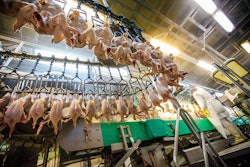
Prices for staple feed ingredients such as corn and soybean meal are up to 100% more expensive in Nigeria than they were a year ago. With producers’ margins squeezed, jobs in the poultry sector are currently at risk.
Over the past seven months, two million workers on the country’s chicken farms have had their employment terminated, reports Vanguard. There are now fears for the future of the remaining five million who rely on the sector for their livelihoods.
The approaching crisis is attributed to the sky-high prices of feed ingredients. Compared to this time last year, prices of corn and soybeans have increased by 80-90%. Poultry feeds cost around twice as much as they did at the end of 2019.
Poultry feed prices up by 100%
While a number of factors have pushed up prices, local industry representatives appear to be blaming grain traders for hoarding scarce supplies. The situation is exacerbated by a move earlier in the year to restrict grain imports.
According to the source, this action by the Central Bank of Nigeria in July did not protect domestic corn production, as intended. Instead of protecting local jobs in corn growing and processing that were threatened by the effects of the coronavirus (COVID-19) pandemic, it created a drastic shortage. Subsequently, the restrictions were eased and around 267,000 metric tons (mt) of the grain have been released onto the market.
Call for measures to boost self-sufficiency
With the poultry industry still struggling, an officer of the national poultry association has called for further action. Among the demands are an immediate ban on exports of processed soy products, and provision of adequate supplies of key feed ingredients. Furthermore, the association is also calling for increased imports of both corn and soybeans.
In the medium term, it is also requesting more support for the nation’s corn growers to raise Nigeria’s level of self-sufficiency in key commodities.
Without these measures, the association fears that “thousands” of the nation’s poultry farmers will lose their businesses. This would add to those who have already lost their livelihoods.
Just as the previous marketing year was ending back in September, the USDA Foreign Agricultural Service (FAS) was forecasting a 13% reduction in Nigerian corn production year-on-year. At 9.0 million metric tons (mmt), this is below the expected level of consumption on 9.4 mmt. The lower harvest was attributed to COVID-19, which hit the country during the main growing season. Meanwhile, insecurity and a period of flooding have exacerbated the situation, reducing the acreage of corn growing.
These issues are further compounded by adverse developments in the Nigerian economy, according to FAS. The local currency (naira; NGN) has been losing ground on foreign exchange markets, and fuel costs have jumped. As a result, costs of inputs and transportation have risen, adding to the overall costs of corn production.
With animal feed — particularly for poultry — accounting for 60% of domestic corn output, FAS expects that Nigeria’s chicken producers will continue to face challenges in the months to come.
Harnessing the power of the sun
In a landmark agreement, Nigeria’s largest egg company has been selected as the site of a new clean energy project.
Representing the largest single clean energy project for the country’s poultry industry, a solar photovoltaic plant will be installed at Premium Poultry Farms. Work is scheduled to start this month.
According to Nigerian Tribune, the development is the result of an agreement with Rensource (a West African renewable energy services provider) and Norwegian investment company, Empower New Energy.
Each year, the plant is expected to generate around one gigawatt-hour of clean energy. Over its 25-year lifetime, it will save an estimated 25,000mt of carbon dioxide.















